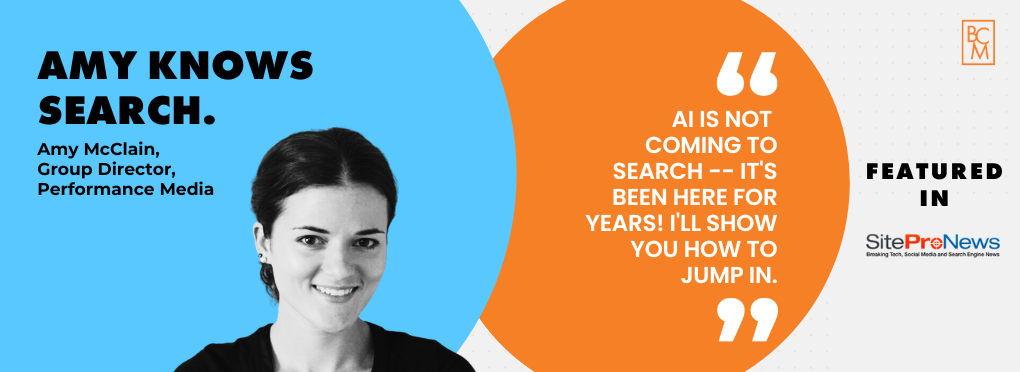4 min read
AI and Digital Marketing: Will We All Be Replaced as Soon as AI Gets Emotions?
Amy McClain : Aug 15, 2023

Digital marketing companies have been quick to recognize the impact of AI and machine learning. 80% of businesses and tech leaders have voted in favor of using AI, recognizing that it boosts productivity and empowers workers to be more creative and productive. As 61% of marketers consider AI an important aspect of data strategy, it is no surprise that artificial intelligence is predicted to add $15.7 trillion to the global economy by 2030.

But the question of what AI’s role is in the digital advertising landscape is one that has many creative professionals questioning their job stability and career paths. And while businesses are keenly exploring its potential for streamlining and automating marketing processes, it’s important to note that AI is still very much in its infancy in regard to digital marketing. Currently, AI can automate certain routine tasks, but it lacks the human touch and critical insight essential for digital marketing success.
Why Embrace AI
AI is that extra set of hands you always wish you had. But they’re super fast and constantly improving the more they work. That’s the beauty of machine learning. The more you use it, the better it gets. AI and machine learning can help you work smarter. It automates simple tasks, delivers detailed data points and analysis, and even provides creative inspiration. It’s a super tool, if used judiciously.
AI has the power of computing on its side. Its speed is unquestionable, and for repeatable, mundane tasks, it excels. When it comes to managing the targeting and budget of an online ad campaign, a solid AI system can be better and faster than an analyst making adjustments by hand or conducting countless hours of data analysis to determine where and which programs perform best. AI provides digital advertisers with the insights to pivot quickly and frees up valuable time to spend on higher-level thinking tasks like test development and future customer acquisition strategies.
How AI is Changing the Advertising World
AI and machine learning hold an important place in the world of digital marketing. Just as we routinely utilize spelling and grammar tools to check the accuracy of our copy, AI can be used to further help us optimize content.

Numerous tools are available to optimize headlines, images, and even full ad copy. The tools use various techniques and algorithms to analyze, improve and target content for better engagement and overall performance. This can range from traditional A/B testing to more granular keyword and content analysis that takes a deeper dive into the readability, tone, and structure of the ad copy to make suggested changes to improve the content, such as rewriting sentences, adding subheadings, or shortening paragraphs.
While tools such as the much-hyped ChatGPT can generate ad copy from scratch based on a set of predefined parameters such as the target audience, brand voice, and product features, these tools are best left for drafts and iterations, though some may offer surprising sparks of inspiration at times.
Ad placement and targeting tools are nothing new, but still worthy of mention and our attention. While the decrease in third-party data and the increase in privacy legislation has made the use of these tools increasingly tricky, it has forced an evolution in the offerings now available, making them increasingly sophisticated and more effective than ever before. AI and machine learning are now being leveraged to replace the once-abundant data available from tracking cookies. Today, data is being harvested more broadly based on consumer actions and behaviors, and targeting is using context and focusing on look-alike audiences to find prospects.

A Tool, Not a Replacement
AI and machine learning tools that help us optimize programs based on data insights are invaluable but still need humans to run them. For example, a targeting tool might show that zip code 06810 has a high propensity to convert for an apartment complex client, however, because of zip code target policies in the housing segment, a Google optimization to bid up for that zip code would result in a policy violation.
In another example, from a paid search perspective, Google claims that it has advanced machine learning and knows the intent of the user, but we have seen the intent be incorrect in their search queries. This might mean we see Google serving ads for a keyword like “NSO app” for “nurses services organization (nso)” keyword. We might think that this is someone searching for an app relevant to the client’s nursing business, but a quick Google search uncovers that it’s for the Nintendo Switch Online app and completely irrelevant to the intent of our query. Long story short, AI is fallible. Quality assurance by humans is still needed to ensure the best outcomes.

Likewise, while AI can automate many mundane tasks, it cannot replace the human element, especially when it comes to client interaction and higher-level thinking. While AI can provide copious amounts of data and insights, clients are still relying on agency experts to explain those results in layman’s terms. Clients pay agencies to interpret, recommend and become experts in their businesses and industries.
The agency’s value is in helping its clients understand how the results from their campaigns translate into growth and results for their business while also providing strategic direction and vision. For example, instead of simply providing a report that shows the CTR of the client’s last campaign increased by 50% you provide context as to what resulted in that change. Did a competitor drop out of the market, or did its industry see a boost in traffic that month due to a specific news event? Through this insight, an agency might suggest a new test for competitive conquesting or capitalizing on the news event with additional keyword coverage. Strategic direction is something that AI has yet to master and is the value-add that agencies should be providing in the first place.
As we move forward into the new frontier of AI and machine learning-assisted marketing, it’s important to remember where it can provide value and where it can not. Many low-value tasks can be automated using AI so that executives’ time can be freed to take on additional higher-level thinking to maintain relevance and value to their clients.
Original article posted on Site Pro News
Images provided by Beeby Clark+Meyler

Master The Power of AI and Data Insights
Gone are the days of running a few big, bold spreads in a popular magazine or launching a digital homepage takeover on a few high-traffic publisher...

Use Audience Targeting To Inform Google Smart Bidding
Google Smart Bidding is becoming very prevalent for all accounts and campaigns. There are several target goals that can be chosen, from maximizing...

